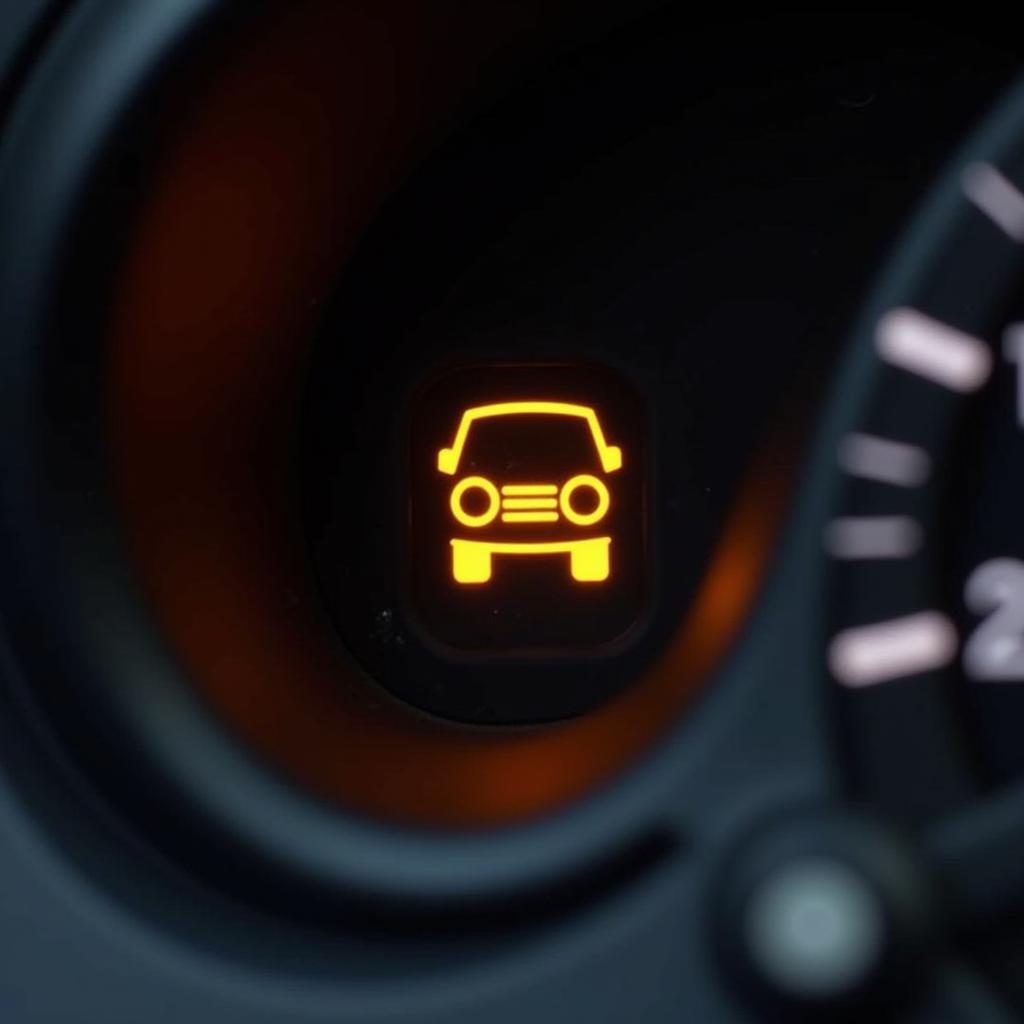The brake warning light on your Chevy Express dashboard is a crucial safety feature. When illuminated, it signals a potential issue within your braking system that requires immediate attention. Ignoring this warning light could lead to reduced braking performance, increasing the risk of accidents. This comprehensive guide will delve into the common causes of a Chevy Express brake warning light and provide step-by-step solutions to help you diagnose and potentially fix the problem.
Understanding Your Chevy Express Brake Warning Light
Your Chevy Express utilizes a sophisticated system of sensors and components to ensure reliable braking. The brake warning light acts as a central communication hub, alerting you to potential issues within this system. While the illuminated light doesn’t pinpoint the exact problem, it serves as a crucial first step in identifying and addressing brake-related concerns.
Common Causes of a Chevy Express Brake Warning Light
Several factors can trigger the brake warning light on your Chevy Express. Let’s explore the most common culprits:
- Low Brake Fluid Level: The most frequent cause is low brake fluid, often indicating a leak in the braking system.
- Worn Brake Pads: Brake pads have wear indicators that scrape against the rotor when they become too thin, triggering the warning light.
- Faulty Brake Light Switch: This switch activates the brake lights when you press the pedal. A malfunctioning switch can also illuminate the brake warning light.
- ABS Issue: A problem within the Anti-lock Braking System (ABS), such as a faulty wheel speed sensor, can trigger the warning light.
- Parking Brake Engaged: Leaving the parking brake partially engaged can cause the light to stay on.
Troubleshooting Your Chevy Express Brake Warning Light
Before heading to a mechanic, you can perform some preliminary checks:
- Check Your Parking Brake: Ensure the parking brake is fully disengaged.
- Inspect Brake Fluid Level: Locate the brake fluid reservoir under the hood. If the fluid level is low, add the correct type of brake fluid as specified in your owner’s manual.
- Examine Brake Pads: Visually inspect the brake pads through the wheel spokes. Look for significant wear or if the pad material is close to the wear indicator.
When to Seek Professional Help
If the brake warning light remains illuminated after performing these checks, it’s crucial to seek professional assistance.
“Ignoring a brake warning light is like ignoring a flashing red light on the road – extremely risky,” warns John Miller, a seasoned automotive engineer with over 20 years of experience in brake systems. “Even if your brakes seem to function normally, a persistent warning light indicates an underlying issue that requires professional attention.”
Advanced Diagnostics and Remote Solutions
Modern vehicles like the Chevy Express often require specialized diagnostic tools and software to pinpoint the root cause of brake system issues.
“With advancements in automotive technology, we can now remotely access a vehicle’s onboard computer system to diagnose and even resolve certain issues,” explains Sarah Thompson, a leading expert in remote automotive diagnostics. “This technology allows us to provide quick and efficient solutions, often eliminating the need for multiple trips to the mechanic.”
**
Preventive Maintenance for a Healthy Braking System
Regular maintenance is key to preventing brake issues:
- Brake Fluid Flush: Consult your owner’s manual for the recommended brake fluid flush intervals.
- Brake Inspections: Include a brake inspection during routine oil changes or annual vehicle checkups.
- Timely Component Replacement: Address any signs of wear or damage in brake components promptly.
Conclusion
A glowing brake warning light in your Chevy Express should never be disregarded. By understanding the potential causes and following the recommended troubleshooting steps, you can ensure the safety and reliability of your vehicle’s braking system. Remember, when in doubt, seeking professional assistance from a qualified mechanic is always the safest course of action.
FAQs
1. Can I drive my Chevy Express with the brake warning light on?
It’s highly discouraged. Driving with an illuminated brake warning light compromises your safety. Have your vehicle inspected and repaired as soon as possible.
2. How much does it cost to fix a Chevy Express brake warning light issue?
The repair cost varies greatly depending on the underlying problem. Simple fixes like adding brake fluid are inexpensive, while complex repairs involving ABS components can be more costly.
3. How often should I replace my Chevy Express brake pads?
Brake pad lifespan depends on driving conditions and habits. Generally, brake pads should be inspected every 12,000 miles and replaced between 30,000 to 70,000 miles.
4. Can I add any type of brake fluid to my Chevy Express?
No, using the incorrect brake fluid can damage your brake system. Consult your owner’s manual for the recommended brake fluid type.
5. Is it safe to check my own brake fluid level?
Yes, it’s a relatively simple check. Refer to your owner’s manual for the location of the brake fluid reservoir and instructions. If you’re uncomfortable performing this check yourself, consult a mechanic.


